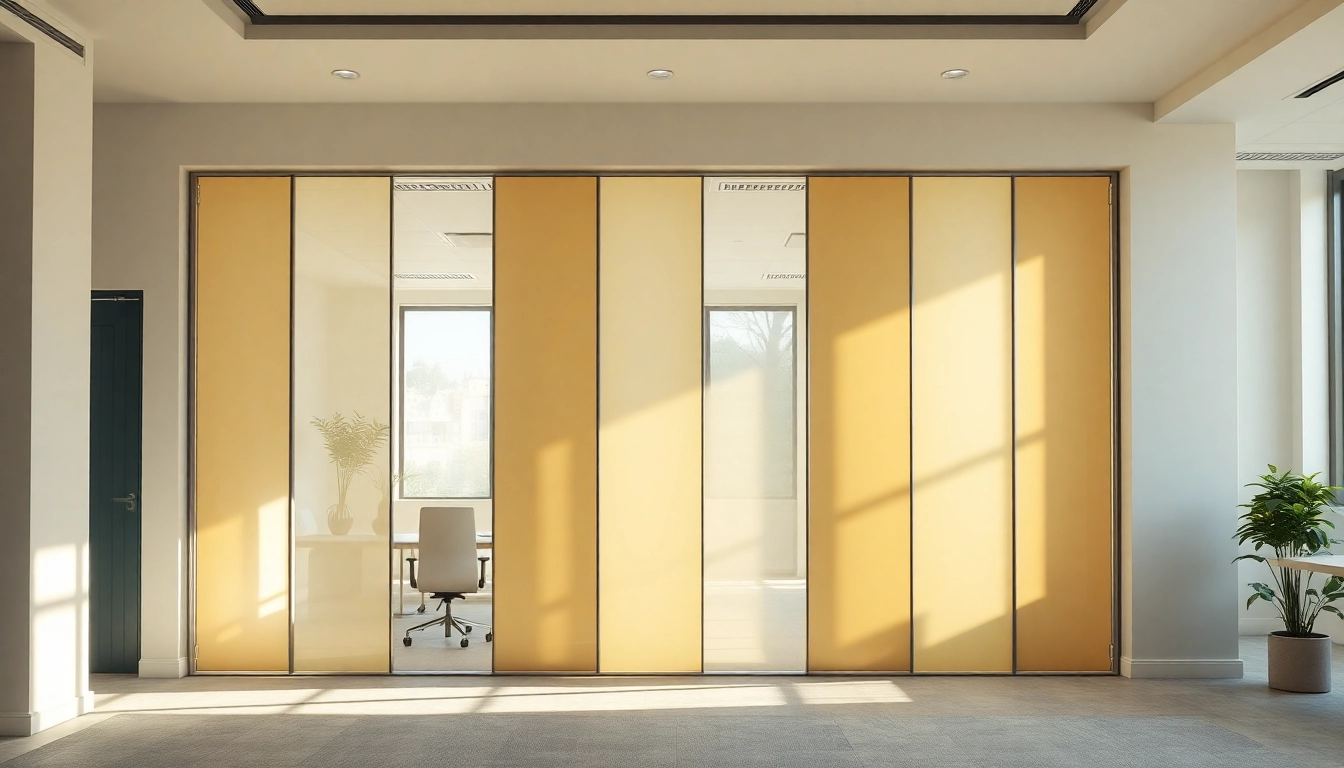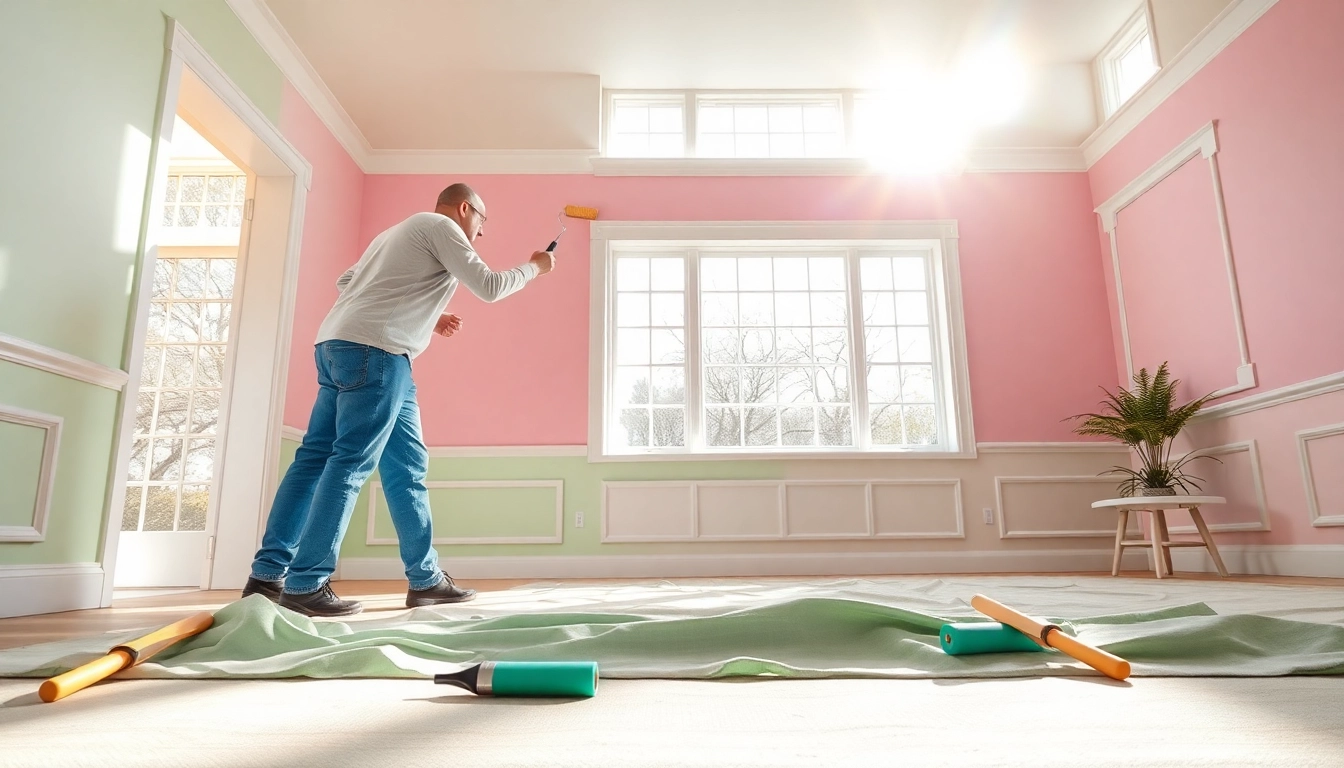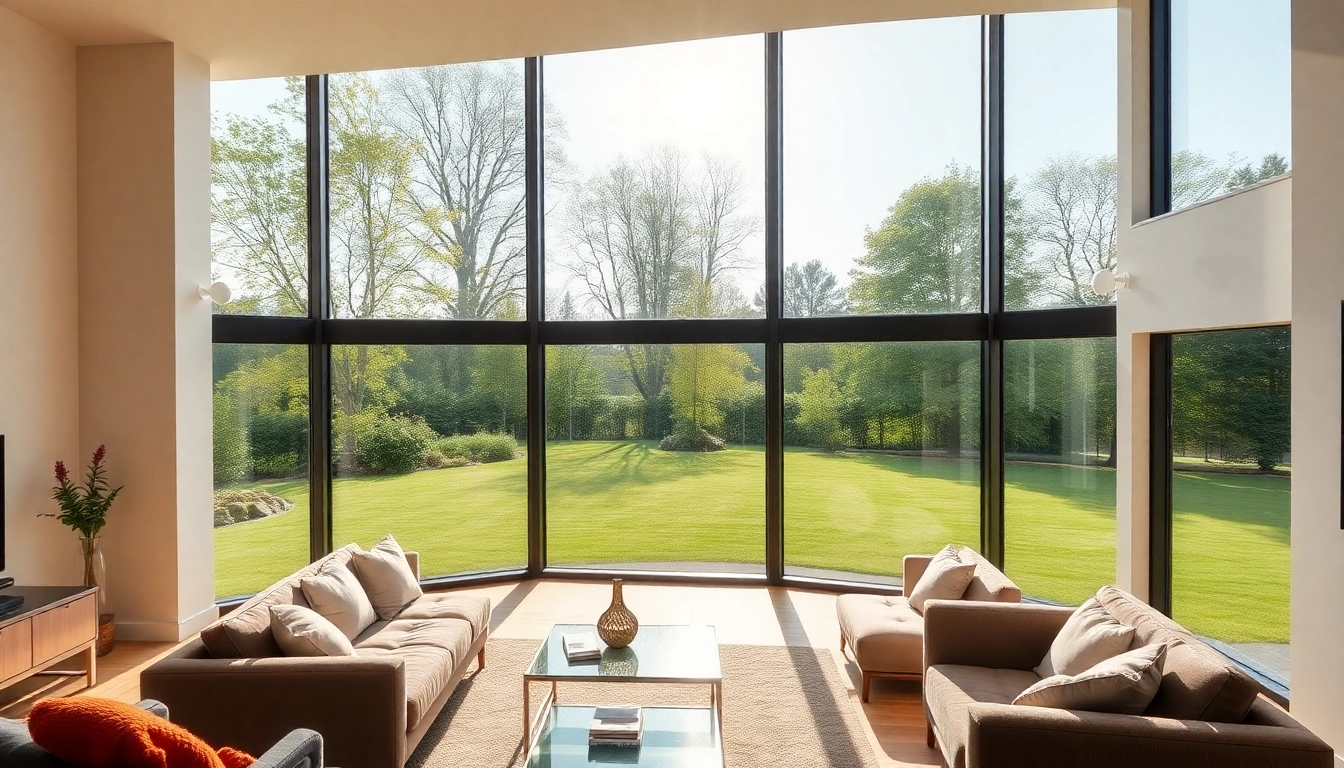Understanding Folding Partition Walls
What is a Folding Partition Wall?
A Folding Partition Wall is a versatile and functional solution designed to divide spaces within both commercial and residential environments. Unlike traditional walls, these partitions can be easily folded and moved, making them ideal for dynamic areas that require flexibility. Typically constructed with lightweight materials, folding partitions can be made from various substances, including fabric, wood, or glass, allowing for a range of aesthetics and functionalities. Their primary role is to optimize space usage, enhance privacy, and improve acoustic performance, all while promoting a more adaptable layout.
Benefits of Folding Partition Walls
Folding partition walls offer numerous advantages that make them a popular choice for various settings:
- Space Efficiency: These walls enable efficient use of available space. They can be deployed or retracted as necessary, allowing for quick transitions between different configurations.
- Cost-Effectiveness: By eliminating the need for permanent structures, folding partitions reduce construction costs and time. This is particularly beneficial for leased spaces where tenants cannot make significant alterations.
- Acoustic Control: Many folding partitions are designed with acoustic properties that help manage sound, making them perfect for offices or educational environments where noise control is essential.
- Customizability: Available in various designs, colors, and materials, folding partitions can be tailored to complement the decor of any room and meet specific functional requirements.
- Ease of Use: Most folding walls can be manipulated with minimal effort. Modern systems often include tracks or wheels for smooth operation, ensuring that they can be easily opened or closed as needed.
Common Uses in Various Settings
Folding partition walls are employed across a variety of environments, showcasing their versatility:
- Office Spaces: In corporate environments, folding partitions can create temporary meeting rooms or collaborative workspaces, facilitating privacy when needed.
- Educational Institutions: Classrooms often benefit from folding partitions, allowing for the quick conversion of small classrooms into larger lecture halls or group study spaces.
- Event Venues: In banquet halls or exhibition centers, these walls can be utilized to create separate areas for activities, catering, or meetings without extensive restructuring.
- Restaurants and Cafes: Folding partitions can segment dining areas for private functions or create ambiance by adjusting the layout as required.
- Homes: In residential settings, folding walls can adapt living spaces to accommodate various activities, such as merging or separating rooms for family gatherings or quiet time.
Choosing the Right Folding Partition Wall
Factors to Consider for Your Space
Selecting the appropriate folding partition wall involves understanding the specific needs of your space. Considerations include:
- Space Dimensions: Measure the area where the partition will be installed, ensuring that it can fold without obstructing movement or access points.
- Usage Frequency: If the partition will be frequently moved, select a system designed for ease of operation and durability.
- Aesthetic Preferences: The appearance of the partition should align with the overall design and color scheme of your space, enhancing rather than detracting from the existing décor.
- Acoustic Needs: Assess the need for sound control, particularly in environments like offices or classrooms where noise reduction can enhance productivity.
- Budget: Determine your budget for installation as well as any necessary maintenance costs associated with the partition.
Material Options and Their Impacts
The choice of material significantly influences the performance and appearance of folding partition walls. Common materials include:
- Fabric: Lightweight and portable, fabric partitions are ideal for temporary setups but may provide limited sound insulation.
- Wood or Wood Veneer: Offering warmth and elegance, wooden partitions are durable and provide better acoustic properties, making them suitable for more permanent installations.
- Glass: Perfect for modern and stylish designs, glass partitions allow natural light to flow while offering sound control; however, they require more maintenance to keep them clean and visually appealing.
- Metal: Metal partitions are sturdy, easy to clean, and can be finished in various colors to match contemporary environments.
How to Measure Your Space Accurately
Ensure accurate measurements of your space prior to installation to avoid complications:
- Start by measuring the width of the area where the partition will be installed, considering the entire span it needs to cover.
- Next, measure the height from the floor to the ceiling to ensure that the partition will fit accurately without any obstructions.
- Identify any protrusions such as windows or electrical outlets that may impact the installation.
- Finally, consider the opening space required for the partition to fold and operate effectively.
Installation Process for Folding Partition Walls
Preparing Your Space for Installation
Before installation, it’s crucial to prepare your space effectively to ensure a smooth process:
- Clear the installation area of furniture and obstacles to create sufficient working space.
- Check for level flooring, as uneven surfaces can affect the stability and operation of the partitions.
- Gather all necessary materials and tools to avoid interruptions during installation.
Essential Tools and Materials Needed
To install folding partition walls, you will need the following tools and materials:
- Drill with appropriate bits
- Measuring tape
- Level for ensuring accuracy
- Screws and anchors for securing the partitions
- Safety goggles and gloves for personal protection
Step-by-Step Installation Guide
Follow this step-by-step guide for the successful installation of your folding partition walls:
- Begin by marking the desired position for the tracks or mounting hardware on the ceiling and wall, ensuring everything is level.
- Drill holes and insert anchors as needed, then secure the tracks in place.
- Attach any necessary support brackets according to the manufacturer’s instructions.
- Install the partition panels into the tracks, ensuring smooth operation.
- Finally, perform a functionality test to confirm that the partition opens and closes easily and securely.
Maintenance of Folding Partition Walls
Regular Upkeep for Longevity
To keep your folding partition walls in optimal condition, implement a regular maintenance routine:
- Inspect the tracks and rollers for debris or obstructions that may hinder movement.
- Clean the surfaces regularly to prevent dust buildup, using appropriate cleaners based on the material.
- Check for signs of wear on hinges and fasteners, replacing parts as necessary to ensure continued functionality.
Signs of Wear and How to Address Them
Recognizing wear and tear early can prevent significant issues down the road. Watch for:
- Difficulty Opening or Closing: This could indicate misalignment or debris in the tracks; address this by cleaning or adjusting.
- Visible Damage: Look for cracks, chips, or warping, indicating that parts need replacing.
- Inconsistent Acoustic Performance: If sound control diminishes, inspect seals and materials for integrity; replace or repair as needed.
Tips for Enhancing Acoustic Performance
To further enhance the soundproof qualities of folding partition walls:
- Consider adding acoustic panels to the surface of partitions for increased sound absorption.
- Ensure proper sealing at the edges of the partition to minimize sound leakage.
- Use heavier materials for improved sound insulation, if feasible.
Real-World Examples and Case Studies
Commercial Spaces Utilizing Folding Partitions
Many businesses have successfully integrated folding partitions into their spaces:
A popular conference center in Chicago took advantage of folding partitions to create flexible meeting spaces. By utilizing partitions, the center can easily adjust room sizes according to bookings and client needs, maximizing revenue from each space.
Residential Design Innovations with Folding Walls
In residential settings, innovative homeowners have embraced folding partitions to facilitate open-concept living:
A family in San Francisco transformed their small apartment by installing folding walls that open up to separate the kitchen from the living area. This design allows them to collapse the partition when entertaining guests, creating an expansive social space.
Feedback and Performance Metrics from Users
Feedback forms a crucial part of assessing the effectiveness of folding partition walls:
Surveys conducted among office managers reveal that 75% noted improved employee productivity due to the capability of adjusting normal workspaces for collaborative projects. This flexibility is cited as an advantage that directly contributes to higher employee satisfaction and better overall performance.


